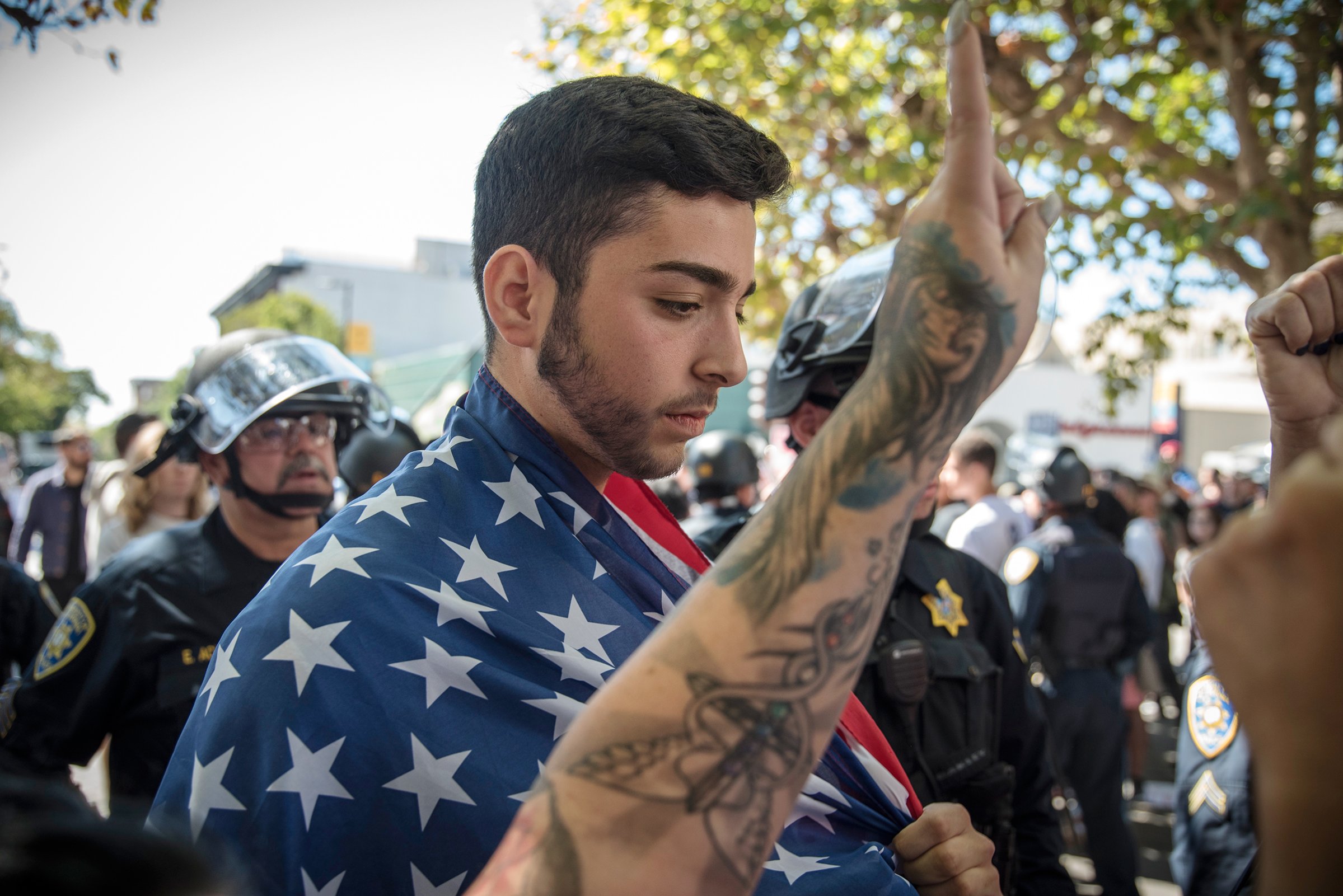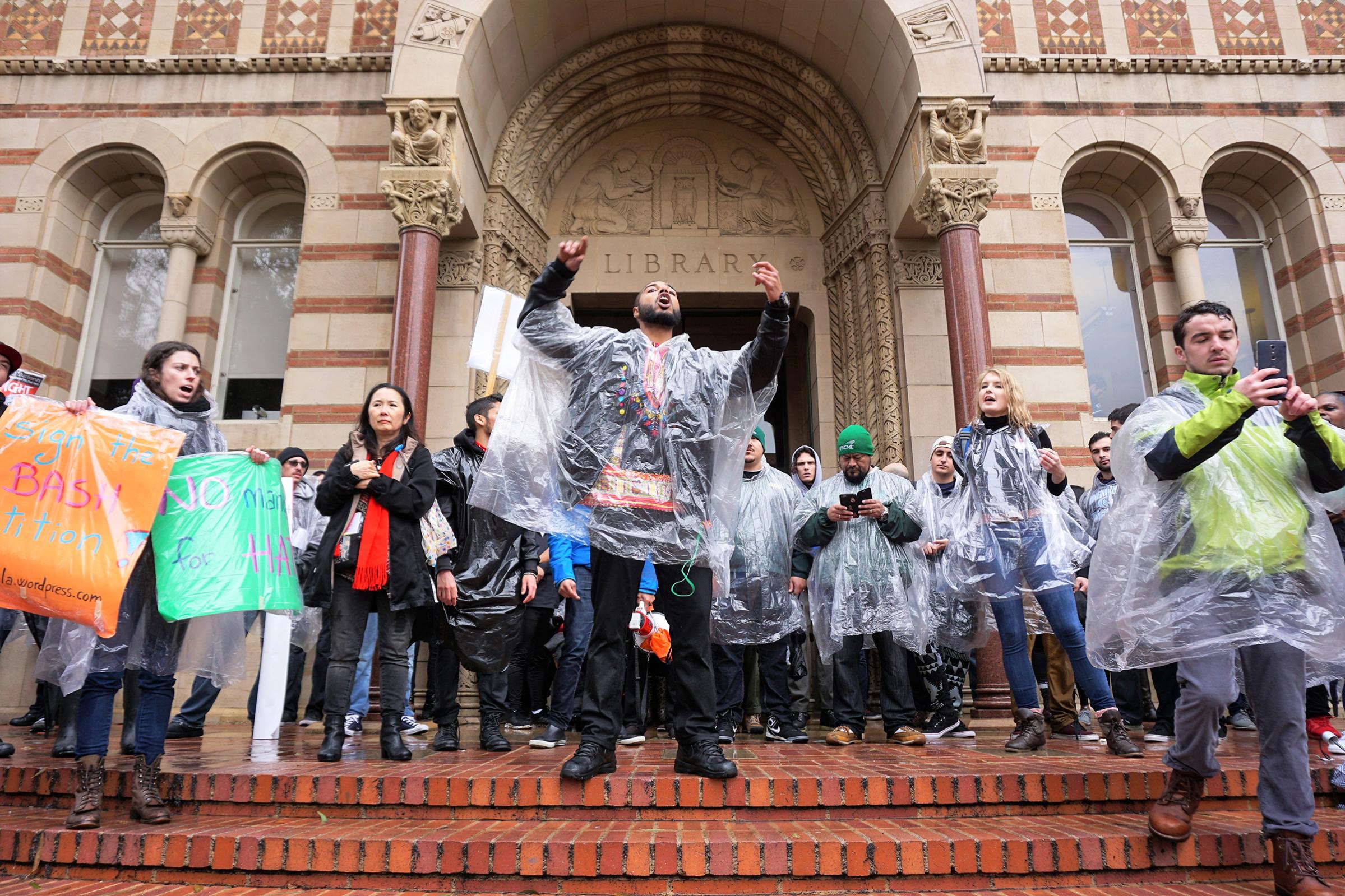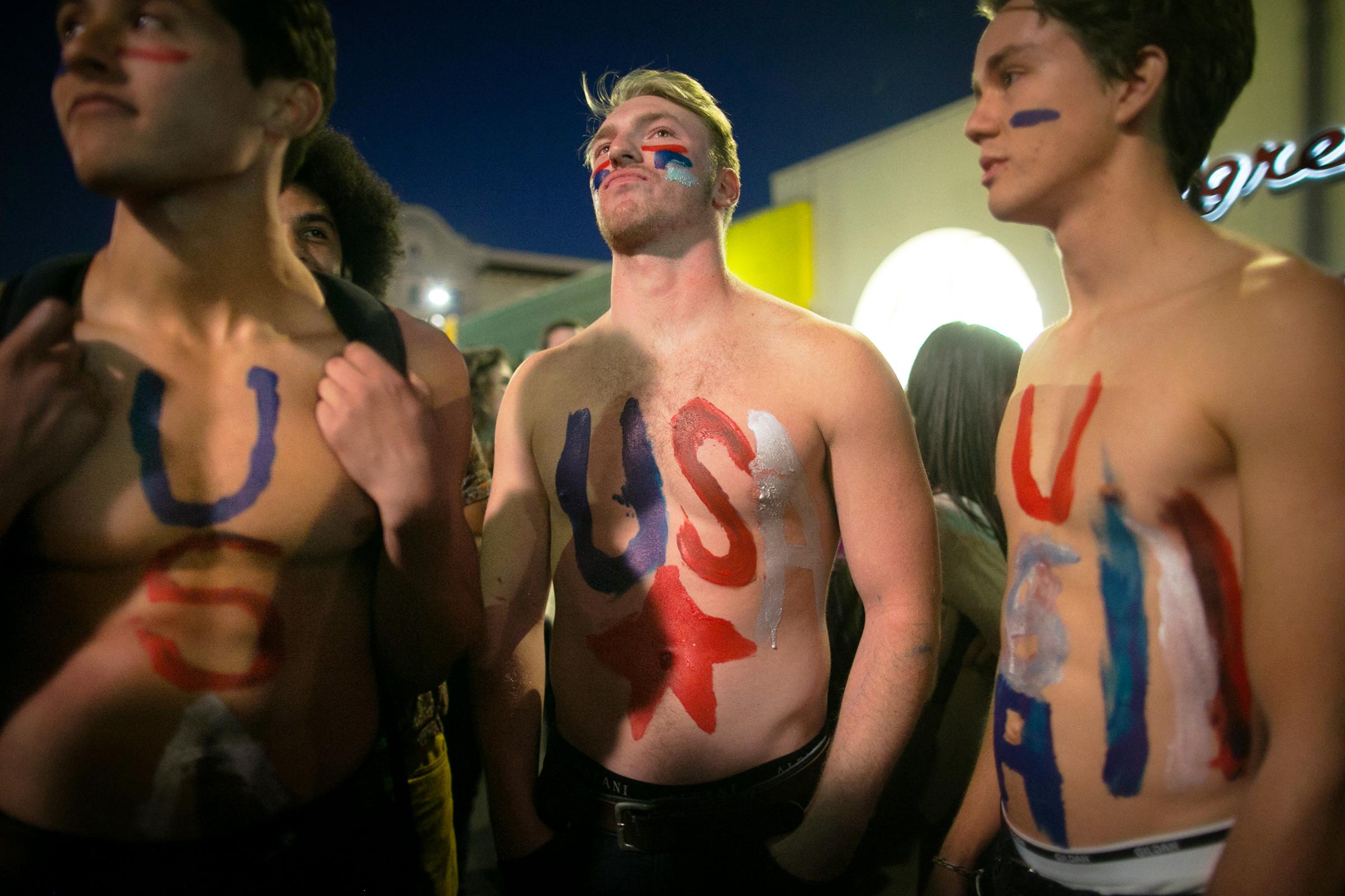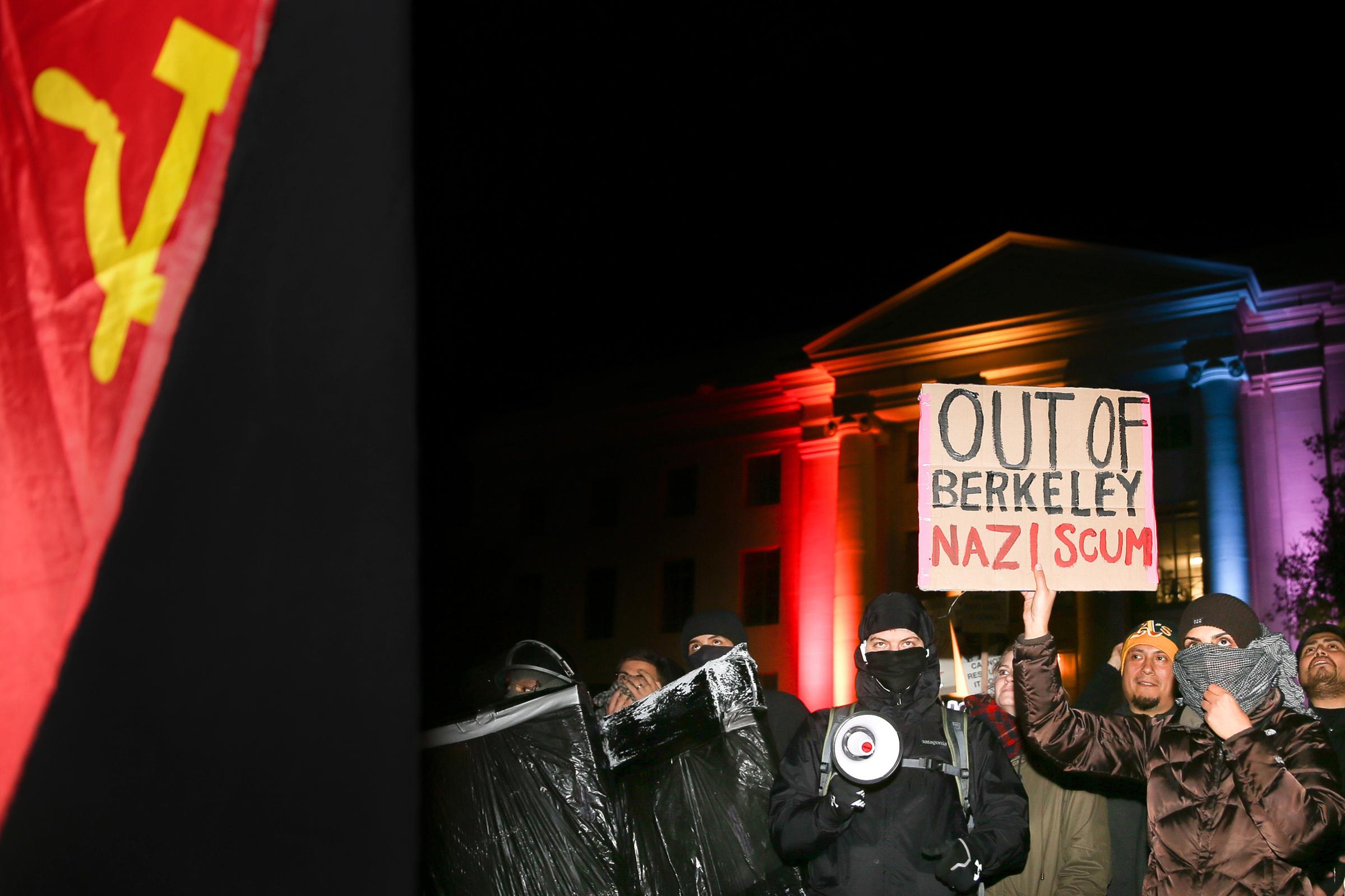
Just past midnight on Sept. 6, a Cornell University freshman was scrolling through Snapchat in her dorm, a building known as the Latino Living Center, when she heard a voice outside her window: “Build a wall around the LLC!” Hours earlier, the Trump Administration had announced that it would phase out the Obama-era program known as DACA, which has shielded young undocumented immigrants from being deported. So when the 18-year-old flew down the stairs to tell other Latino students that she had heard those words coming from the direction of a neighboring fraternity, they responded by emailing the frat–and also filing a flurry of bias reports with the school.
By the next night, a student group called La Asociación Latina had posted a list of demands on Facebook, asking the fraternity to issue a formal apology and institute diversity training. It also asked the school to acknowledge that this was not an isolated incident but an event emblematic of the “bigotry and discrimination” that had gone unchecked on the campus. The group included a statement from an assistant professor who described the chants as “acts of terror” targeting “a stressed out and vulnerable community.” Cornell officials responded by expressing concern and also recognizing the “rights of open expression.” Arky Asmal, a junior and part of the group’s leadership, took issue with those terms. “Free speech is speech that is not aimed to hurt,” he says. “Free speech that dehumanizes is not free.”
That assertion captures a fundamental conflict dividing campuses across the country as students try to both identify–and end–entrenched discrimination while preserving the near sacred value of free speech.
It’s a dizzying battleground: civil libertarians resist demands that even hateful speech be shut down as students protest controversial speakers and right-wing critics dismiss young liberals as delicate “snowflakes.” U.S. Attorney General Jeff Sessions has joined the fray, saying in a recent speech at Georgetown University that college students too often “silence voices that insufficiently conform with their views.” Long in the ideological minority, conservative students complain that they’re not free to exchange ideas in what feel like liberal echo chambers. And even those who are sympathetic to the students pushing for more inclusive norms on campus think some of their tactics are counterproductive. As the Supreme Court has argued in protecting hate speech, if you limit speech, ultimately it’s minorities who are most likely to see their viewpoints squelched.
But the push and pull isn’t just about speech. Many liberal students believe a tolerance for hostile rhetoric is an indicator of bigger injustices, both on campuses and in society, that need to be addressed. Campuses are “places that continue to oppress their students without knowing because it’s the status quo of this country,” says Cornell senior Silvia Treviño. Her side is making no bones about snuffing out every sign of exclusion at a time when white nationalists are literally marching in the streets. And supporters see these young people as embarking on the “newest phase of the civil rights transformation,” as one advocate puts it, taking on lingering vestiges of inequality as they demand that buildings be renamed or “safe spaces” be created.
It’s all happening as waves of hostility crash on both sides of the university gates, with the rise of the alt right, the naming of the “alt left,” the spread of fake news, the tendency of people to damn one another on social media before holing up in their politically curated silos. “There’s almost a culture of gotcha, where one false statement or infelicitous framing can become the fodder for a million tweets,” says Suzanne Nossel, executive director of free-speech advocacy organization PEN America. “That impairs our discourse.”
The continuing fights are a fundamental challenge for higher education. Nervous faculty inch along a tightrope, trying to protect students who feel threatened without shielding them from uncomfortable ideas. Complaints about coddling collect in administrators’ inboxes. So do calls for empathy. Does the right balance involve issuing a “trigger warning” before Thomas Hobbes’ proclamation that the life of man is by nature “solitary, poor, nasty, brutish and short”? Depends on who you ask.
In the past, universities have been at the vanguard of civil rights, yet few values are more important in education than the free exchange of ideas. The University of California, Berkeley, proud home of the Free Speech Movement, has struggled to find a balance. Over the past year conservative students have repeatedly invited controversial speakers who have tested the school’s commitment to free speech–and the patience of their peers. The invites have fired up outside activists too, including extremists on the right and left who violently clashed in the city several times last semester. So when the current semester began with an appearance by Ben Shapiro–a former Breitbart editor who has decried the “spoiled brats” who perpetuate “the victim mentality that now dominates America’s college campuses”–a showdown was inevitable.
On the night of Sept. 14 police officers roamed the campus by the dozen, decked out in riot gear and driving armored cars. Helicopters hovered above. Hundreds of students and local antifascist activists came out to protest, and the school shut down a whole section of campus. A small group of students occupied one of the closed buildings, hanging messages to the chancellor in the windows: Student safety over spoiled speakers. Their chants could be heard by the crowds waiting to get into the venue. “What kind of speech is free?” the occupiers chanted, “Only white supremacy!”

Inside, Shapiro repeated old arguments that minority groups overstate the effects of racism and oppression. “In a free country, if you fail, it is probably your own fault,” he said. He also disavowed white supremacy and the alt right; his remarks could not be heard outside, but it’s not clear how much that would have mattered. Even after he had finished, protesters continued to speak out against both “neo-Nazis” and the police, with some arguing that their heavy presence was traumatizing for students of color.
Other campuses have endured their own controversies over speakers. Charles Murray, an academic who has linked socioeconomic status to race and intelligence, was shouted down by what critics called a “mob” of protesters at Middlebury College last March. (In the aftermath a professor got a concussion, and Murray ended up giving his speech via livestream from a video studio.) Not all end so badly: there were no injuries after Shapiro’s appearance, though nine people had been arrested and the school was out an estimated $600,000 in security costs.
That Berkeley would spend that much money to host someone who spoke for only 30 minutes before beginning a Q&A is a testament to the pressure that universities are under to prove that all viewpoints can be heard. “There are those who perceive universities to be the farm team for the liberal establishment, rightly or wrongly,” says Berkeley spokesman Dan Mogulof. “As a public institution we have to abide by the First Amendment.”
The First Amendment is chiefly a bar on the government’s ability to restrict the press, and while it is not unlimited, it doesn’t mention the academy. What drives students and professors to invite these speakers is mostly the audience: many campuses in America are overwhelmingly liberal, especially lately. The Higher Education Research Institute has polled incoming freshmen for decades and found that there was a historic low of students who identified as “middle of the road” in 2016, at 42%, as well as one of the highest proportions who identified as left of center, at about 36%. Just over 20% said they fell to the right. The numbers for faculty are even more skewed. When the institute last surveyed faculty, in 2013, about 60% identified as left of center, compared with about 13% who characterized themselves as conservatives or on the far right.
Conor Healy, a junior at Harvard University, describes himself as a libertarian and is, according to at least one fellow student, “the most hated person on campus.” He helped start a group called the Open Campus Initiative, which exists to invite speakers with viewpoints that are not the ones “everybody already likes,” he says. Fellow students protested when his group brought Murray to speak in September. “Holding different views means people don’t want to talk to you,” Healy says. “It means people feel you deserve social punishment.” He says many peers won’t tolerate questions about issues like gun control or abortion because the act of asking suggests there is doubt about the “right” answer. Conservative students elsewhere say political correctness has gone too far and that they can only have conversations about what they really think in secret. As one recent college graduate put it, “I should be able to tell people I voted for Trump without worrying they’ll do something to my car.” The phenomenon mirrors habits outside the campus: President Trump’s victory might not have been such a shock had more voters felt comfortable admitting their support to pollsters.
“One of the things that does happen is label flinging,” says Addison Merryman, a conservative evangelical Christian who studies at Duke University. “People throw around the labels of racist, sexist, homophobe, xenophobe, so you have to be very careful about what you say and who you say it to.” Liberal “groupthink,” as one of his peers describes it, doesn’t necessarily mean conservative students feel silenced so much as a need to be meticulous about the words they use.
The fear of backlash extends inside the classroom. Robert Paquette, a history professor at Hamilton College in New York state, says students often lament to him that it isn’t safe to speak their mind because other students or even a teacher might “come down on them” for taking an unpopular position. “And I’ve raised the question,” he says. “You mean to tell me at Hamilton College you’re paying $65,000 a year to censor yourself? What kind of education is that?”
Some professors have also reported a chilling effect on their own speech, citing complaints that texts by authors like Mark Twain are “offensive.” Bret Weinstein, a longtime biology professor at Evergreen State College in Olympia, Wash., says many colleagues worry that saying or doing something that students find impolitic could lead to complaints and imperil their jobs. “The threat … is not an idle one,” he told TIME in early September.
Weinstein, who describes himself as liberal, became a hero to the right last semester when he opposed the structure of “Day of Absence,” when white students are encouraged to leave campus for a day as part of an exercise that has traditionally highlighted the contributions made by minority students. “It’s simply not acceptable to ask people not to come to school on the basis of their skin color,” he says. Unhappy students surrounded him in a hallway and called for his job. Citing multiple incidents of alleged racism on campus, they also barricaded the school president in a room to air their grievances. The protests became a national flashpoint in the fights over campus culture. “Colleges have to be about discovering what we don’t yet know,” Weinstein says, “and that process will come to a screeching halt if we are leveling threats of bias over the way people phrase things.”
By late September, Weinstein had resigned, and the school had agreed to pay him a $500,000 settlement in response to a claim alleging that the college failed to protect its employees.

Being sensitive to the words people use, liberal students say, is part of rooting out bigotry that might be more obvious to some people than to others. New, unofficial rules that might seem silly to baby boomers–like using the gender-neutral “Latinx” rather than Latina or Latino–are de rigueur among many high school students who get secondary educations on Tumblr. And those norms are seeping into workplaces filled with progressive 20-somethings. (Just ask the HR department at companies like Google.) While universities might have been home to protests over segregation and war in previous eras, liberal students say they are now united around pushes for inclusivity–and some are accusing schools of failing to meet the needs of the diverse student bodies that administrators routinely say they seek to have. Forty years ago, white individuals made up nearly 85% of college students. Now they make up about 58%.
Reuben Faloughi is a 26-year-old Ph.D. candidate and founding member of Concerned Student 1950, the group that held protests at the University of Missouri two years ago over the administration’s handling of racial issues, leading the president and chancellor to resign. He says students are channeling social movements like Black Lives Matter and reacting to the daily decisions of the Trump Administration in an effort to confront discrimination. “Some of these campuses would rather have these neutral environments of learning. But nothing is neutral,” Faloughi says. “You have students of color and other marginalized groups who are increasing their numbers on college campuses. And you have institutions who don’t want to hear about [issues that affect those groups]. So this is what you get.”
The Mizzou protests began after a swastika had been smeared in feces on a bathroom wall, one of 150 instances of that symbol showing up on campuses in the past year, according to one count. Images of college students in blackface went viral this year, as did nooses decorated with bananas and the letters of an African-American sorority. Nor do plugged-in millennials feel isolated from incidents happening in the nation’s capital, whether Trump is calling divisive Confederate monuments “beautiful” or pushing for stricter immigration enforcement.
Imari Reynolds, a student at the University of California, Santa Cruz, says the political winds helped drive a three-day building takeover she organized with her peers last semester. “Our government is openly racist,” says the 21-year-old. “That same thing has trickled down into our universities.” She recalls finding graffiti on an African-American-themed dorm on campus that read, I’ll be back. Among the demands the students issued during the sit-in was that minority students have a dedicated space to congregate and that the theme house be painted in pan-African colors. The school granted almost everything they asked for and absorbed plenty of criticism, some of which was “clearly racially motivated,” a spokesperson says.
At the university of Arizona, students from various groups–representing black students, LGBTQ individuals, women and others–banded together last year and issued a 19-page list of demands to the school, ranging from the installation of gender-inclusive restrooms and free tampons to a boost in hiring staff members of color and issuing trigger warnings in class. “It blows my mind that people can’t recognize the power dynamics that exist today,” says Trinity Goss, a recent graduate who led the school’s Black Student Union.
In some battles, students stand shoulder to shoulder with faculty. “Republicans rule the country right now. A young black gay man does not. So if there’s a little oasis that protects the young black gay man, I’m sympathetic to that,” says john a. powell, a law professor at Berkeley (who does not capitalize his name in recognition of its being a slave name). “If you want people to engage in intellectual experimentation, you have to create a space where the cost is not too high.”
Still, he says, there are times when young people miss the opportunity for compromise, as when Princeton University students demanded that Woodrow Wilson’s name be removed from campus buildings because of his segregationist views. The answer, powell says, is to be open about the fact that the brilliant academic was also a racist. “Complicate it,” he says. “You don’t say, ‘Let’s tear it out.'” Ultimately that is the conclusion the school arrived at. On other campuses students have won fights to rename buildings that honored slave owners, and administrators have acted on their own to take down symbols that might undermine quests for diversity. In the wake of the protests over Confederate statues that broke out this summer, for example, three monuments were removed from the University of Texas at Austin before classes started. Such items “have become symbols of modern white supremacy and neo-Nazism,” the university president said.
While conservatives may complain that their liberal peers are unwilling to engage, many on the left argue that some things are no longer open for discussion, that speech itself can be violence and that trying to question the equality of women or undocumented people or same-sex couples can amount to harassment. “Ignorance is hostility in this political climate,” says Cornell student Treviño. “It’s attacking our mental well-being.”
Not everyone in activist communities agrees that refusing to debate is a good thing. As longtime gay-rights activist Cleve Jones puts it, “Some of the younger activists will say things to people they don’t agree with like, ‘It’s not my job to educate you.’ Well, it is your job.”
In many ways the complaints boil down to feelings of exclusion. Many students say that practices they are pushing, like no longer making assumptions about other people’s gender identities, are crucial steps for making sure everyone feels included at school. “The matter of preferred pronoun is pretty big. I get emails from students with the preferred pronoun in their signature line,” says Amitava Kumar, a professor of English at Vassar College. “You are likely to think it’s a bit much. But then you hear some of the old farts talking about it, and you start cheering for the students instead.”
Some amount of education should be discomforting and disagreeable. You need to know how bad food tastes in order to spit it out and explain to others why they might lower their forks. While administrators across the country echo the sentiment that a culture of consensus isn’t a good one for young people who are supposed to learn about the world, some schools have gone further than others.
Last year the University of Chicago’s dean of students sent a letter to incoming freshmen stating that the school does not support trigger warnings or the creation of “intellectual” safe spaces “where individuals can retreat from ideas or perspectives at odds with their own.” While some cheered the letter as a boon for academic freedom, many criticized it as setting up a false dichotomy between such practices and open expression. This year the letter sent to incoming freshmen did not mention trigger warnings but did note that the school welcomes people with “extremely diverse perspectives.”

Other campuses are trying different tacks. Michael Roth, president of Wesleyan University, has called for “affirmative action” when it comes to the study of conservative ideas, arguing that schools must approach that task as they have diversity in students by figuring out who is underrepresented and then finding them. The liberal bent of professors is an issue, he says: “Students are really good at figuring out what the professors want to hear and giving it to them.” Teachers have hit the streets alongside their pupils, getting arrested in marches inspired by Trump’s DACA decision and joining students at Georgetown–who put tape over their mouths to protest the Administration–when Sessions came to speak.
Roth also draws a line between inviting discourse from right-leaning academics and known provocateurs. “It becomes a test of free speech that’s like your tolerance for idiots,” he says. A prime example is former Breitbart editor Milo Yiannopoulos, who has said feminism is a “cancer” and rape culture is a “fantasy.” His speeches have been canceled at universities because of safety concerns. At Berkeley, faculty and students called for the school to deny him a platform, saying his rhetoric incites harassment.
From California to North Carolina lawmakers have gotten involved, considering bills related to free speech at institutions of learning. In Louisiana, Governor John Bel Edwards vetoed a Republican-backed measure this summer that was aimed at protecting controversial speakers and penalizing students who disrupt them. In early October the board of regents for the University of Wisconsin system approved a similar measure, which would suspend students who repeatedly disrupt “the expressive rights of others.”
One controversial practice has been the designation of “free-speech zones,” areas designated for political outrage. Supporters say that confining protest helps ensure that campuses are not disrupted. Opponents say it’s censorship. Many universities have also put in place bias-response teams, groups of school officials who can respond to complaints about offensive speech. Those have their critics too, with one free-speech organization claiming that such systems encourage people to report on one another.
Students have proved they are not shy about telling administrations when they think they are getting the balance wrong. And there are costs to a campus when disagreements lead to high-profile protests. Enrollment at the University of Missouri dropped 35% in the two years since disruptions caught the nation’s attention. Early numbers indicate that enrollment is down at the Evergreen State College too. The reasons might reflect disgust with either side, with applicants being turned off by administrations that seem clueless or by students who seem unruly.
Nossel of PEN America, for one, believes that students are taking part in a grand renegotiation as Americans try to find common ground about what kinds of speech and actions are appropriate. Plenty of people are calling for sensitivity that is nuanced, not dogmatic. But nuance can be a hard sell in a moment when people feel threatened and menaced.
Back at Cornell, a member of the frat wrote a note to the students who live next door saying the “chant” was just a joke. He apologized and stated that he is also Hispanic. The students who hold leadership positions in La Asociación Latina were not persuaded that it mattered. A few days later, a black student was allegedly assaulted and called the N word by members of another fraternity. After that, president Martha Pollack said she would convene a task force to address “persistent problems” of intolerance at the school.
She also implored students to greet speech and attitudes they don’t like with more speech of their own. “Please speak out against injustice,” she wrote. “Our community needs your help.”
–With reporting by CHARLOTTE ALTER, SARAH BEGLEY and KATIE REILLY/NEW YORK; and MAYA RHODAN/WASHINGTON
More Must-Reads from TIME
- Donald Trump Is TIME's 2024 Person of the Year
- Why We Chose Trump as Person of the Year
- Is Intermittent Fasting Good or Bad for You?
- The 100 Must-Read Books of 2024
- The 20 Best Christmas TV Episodes
- Column: If Optimism Feels Ridiculous Now, Try Hope
- The Future of Climate Action Is Trade Policy
- Merle Bombardieri Is Helping People Make the Baby Decision
Contact us at letters@time.com